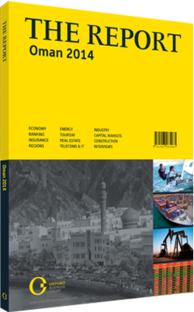OBG talks to Melanie Schultz van Haegen, Dutch Minister of Infrastructure and the Environment

Interview: Melanie Schultz van Haegen
How would you characterise the Netherlands’ bilateral relationship with Oman?
MELANIE SCHULTZ VAN HAEGEN: We have a long history of trade with Oman – dating back to the 17th century – which started with the Dutch East India Company and spice and sugar trading. This trade developed a focus on transport, since both nations were historically maritime powers. Today, however, the relationship between our two countries is much broader; we undertake significant collaboration in a number of sectors, from ports management to aviation baggage handling, waste management, and oil. We also have a number of areas where we partner on cultural exchange.
What effect will the completion of the GCC rail network have on the shipping industry?
SCHULTZ: The completion of the railway is important; if Oman wants to pursue its goal of becoming a gateway for the region to Asia and beyond, it will not only need a good port network, but an extensive and integrated rail network for overland transportation too. This is particularly important if the sultanate is to be used as a hub by fellow GCC states.
What employment opportunities can ports offer?
SCHULTZ: The situations in the Netherlands and Oman are quite different. For a start, we have different employment structures. Thanks to highly skilled port staff, combined with strong soft-infrastructure, efficiency can be extremely high. As a result of this, downtime can be reduced.
A skilled national workforce in technical areas such as these cannot be developed overnight, but it’s important to develop a strategy with the long term in mind. It is not simply a matter of university degree courses. You need a combination of both higher education and vocational training. More broadly though, Oman can expect its ports to attract lawyers, creative people – those working in the service sector – and this has certainly been our experience in the Netherlands. Indeed, ports have the capacity to draw on a much wider set of associated industries than one might initially imagine.
What can Oman learn from the Dutch model of integrating ports into the transport system and into the wider economy?
SCHULTZ: We have strived to inter-link all modes of transport so that we can offer fast, sustainable and cost-effective transport. This is also important for Oman so that it too can offer a broad range of options for the transport of goods. This includes the physical transport infrastructure, but also the all-important Customs framework, information systems and soft infrastructure. It is a question of synergies.
Just as Oman is looking to develop clusters of value-added industry around its ports, we have done much the same in the Netherlands. We selected nine “top sectors” to target, which were carefully chosen by assessing their potential to develop into centres of excellence. The Netherlands – like Oman – have an ideal location for logistics. However, competition is intensifying, so we need to consider all factors in order to remain competitive. Providing value-added benefits for industry and the broader economy are key to ensuring long-term sustainability.
How can closely situated ports avoid negatively competing with each other?
SCHULTZ: In the Netherlands, we brought our ports together to operate globally, presenting themselves abroad as simply Dutch ports. They work very closely, and although there is still some competition this approach has made a considerable difference.
It is important to think bigger and to present yourself as a regional hub rather than solely a national hub. In the same way, Oman is currently in the process of re-orientating itself to compete regionally. With its strong geographical position, the sultanate is in a very good position compared to its regional rivals.
You have reached the limit of premium articles you can view for free.
Choose from the options below to purchase print or digital editions of our Reports. You can also purchase a website subscription giving you unlimited access to all of our Reports online for 12 months.
If you have already purchased this Report or have a website subscription, please login to continue.

